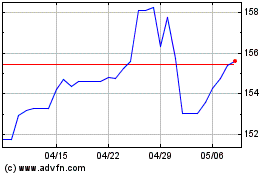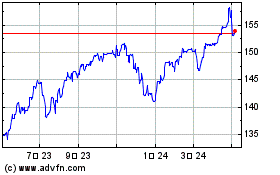Australian, New Zealand Dollars Advance Amid Trade Optimism
2018年11月2日 - 1:26PM
RTTF2
The Australian and New Zealand dollars climbed against their
major counterparts in the Asian session on Friday amid risk
appetite, as signs of potential progress in U.S.-China trade
relations and hopes for China stimulus underpinned sentiment.
U.S. President Donald Trump said Thursday that he had a "long
and very good" conversation with Chinese President Xi Jinping on
trade and North Korea, and that the two planned to meet at the
upcoming G-20 summit.
China's foreign ministry said that the telephonic conversation
between Trump and Xi was positive and they believed they should
"enhance trade relations".
All important U.S. jobs report is due later in the day, with
economists expecting employment to climb by 190,000 jobs in October
after an increase of 134,000 jobs in September.
The jobless rate is expected to hold at 3.7 percent. It will be
the final jobs report before next Tuesday's congressional
elections.
Data from the Australian Bureau of Statistics showed that
Australia retail sales rose a seasonally adjusted 0.2 percent on
month in September, coming in at A$26.892 billion.
That was shy of expectations for an increase of 0.3 percent,
which would have been unchanged from the August reading.
The aussie strengthened to 0.7250 against the greenback, its
strongest since September 27. On the upside, 0.74 is possibly seen
as the next resistance level for the aussie.
The aussie climbed to more than a 4-week high of 81.94 against
the yen, 2-1/2-month high of 1.5743 against the euro and more than
a 5-week high of 0.9480 against the loonie, from its early lows of
81.03, 1.5844 and 0.9420, respectively. Next key resistance for the
aussie is seen around 84.00 against the yen, 1.54 against the euro
and 0.96 against the loonie.
The aussie climbed to 1.0859 against the kiwi, reversing from an
early 2-day low of 1.0810. The aussie is seen finding resistance
around the 1.10 region.
The kiwi appreciated to more than a 5-week high of 0.6690
against the greenback, 3-month high of 75.62 against the yen and a
4-month high of 1.7061 against the euro, coming off from its early
lows of 0.6640, 74.75 and 1.7175, respectively. The kiwi is likely
to find resistance around 0.68 against the greenback, 77.00 against
the yen and 0.68 against the euro.
The yen dropped to an 11-day low of 147.26 against the pound,
9-day low of 86.61 versus the loonie and a 2-day low of 113.10
against the greenback, from its early highs of 146.29 and 85.97,
and a 3-day high of 112.56, respectively. The yen is likely to find
support around 149.00 against the pound, 88.00 versus the loonie
and 115.00 against the greenback.
Reversing from its early highs of 128.37 against the euro and
112.28 against the franc, the yen weakened to 10-day lows of 129.32
and 112.95, respectively. If the yen falls further, 131.00 and
114.00 are likely seen as its next support levels against the euro
and the franc, respectively.
Looking ahead, PMI reports from major European economies are due
in the European session.
In the New York session, U.S. and Canadian trade data for
September, U.S. and Canadian jobs data for October, U.S. factory
orders and durable goods orders for September are slated for
release.
US Dollar vs Yen (FX:USDJPY)
FXチャート
から 3 2024 まで 4 2024

US Dollar vs Yen (FX:USDJPY)
FXチャート
から 4 2023 まで 4 2024
